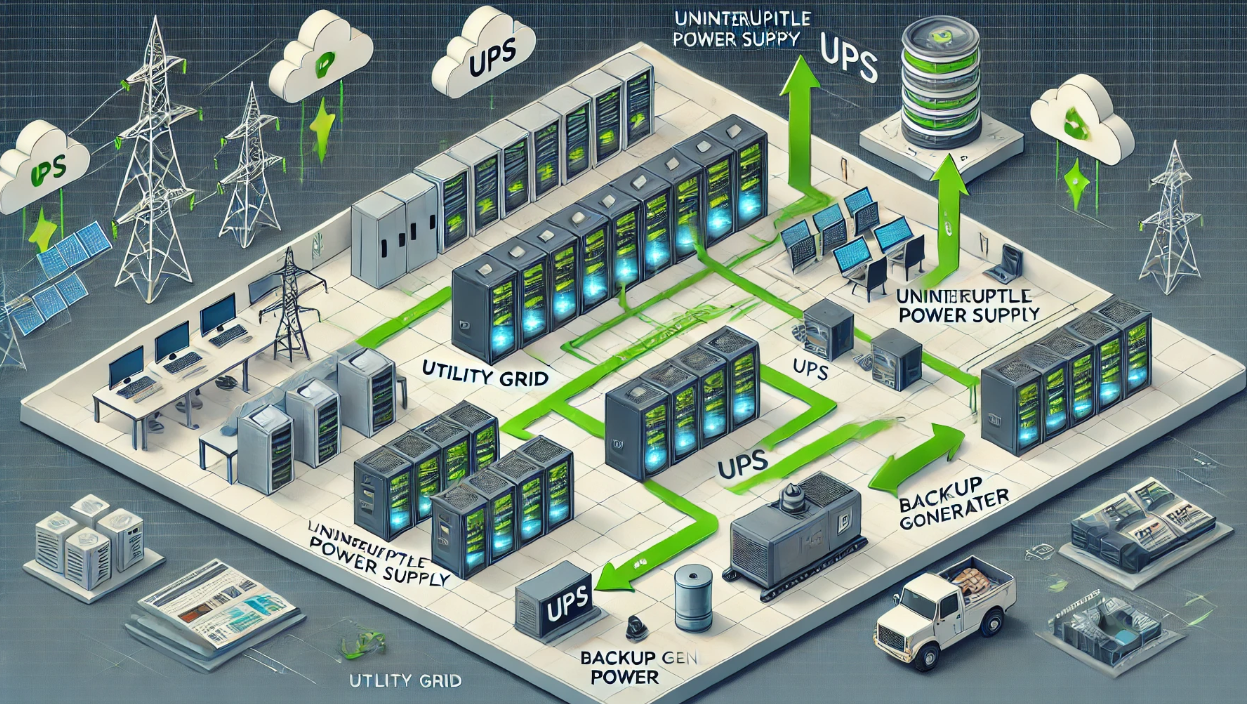How UPS Systems Protect Data Centers During Power Outages and Grid Instability
Meta Description: Discover how UPS systems safeguard data centers by maintaining power during outages, filtering voltage fluctuations, and preventing catastrophic data loss before backup generators kick in.
⚡ Introduction: The Hidden Hero Behind Always-On Infrastructure
In today’s hyper-connected world, even a few seconds of downtime in a data center can result in:
-
Service interruptions
-
Customer dissatisfaction
-
Data corruption or permanent loss
But there’s a silent protector standing guard: the Uninterruptible Power Supply (UPS).
In this post, we’ll explore exactly how UPS systems shield data centers from grid instability, bridge power gaps during blackouts, and ensure zero data loss, even when the lights go out.
What Is a UPS System — and Why Data Centers Need One
A UPS (Uninterruptible Power Supply) is a system that provides immediate, short-term power to connected equipment in the event of a utility power failure or fluctuation.
Data centers rely on UPS systems to:
-
Keep servers and storage running during outages
-
Prevent voltage surges and sags from damaging hardware
-
Maintain data integrity until backup generators take over
⚠️ Even a one-second drop in voltage can crash systems or corrupt files — and that’s unacceptable in a data center.
How UPS Systems Bridge the Power Gap
Here’s what happens during a typical power loss:
Normal Operation:
-
Grid → UPS (charging batteries) → Load (servers)
Power Failure:
-
Instant detection of power loss (milliseconds)
-
UPS switches to battery power
-
Maintains power without any downtime
-
Signals generators to start
-
Once the generator is ready (10–60 seconds), UPS switches over to generator input
-
Batteries recharge while generator powers the load
The UPS is the bridge between grid failure and generator readiness.
️ Diagram: Power Flow During a Blackout
[Suggested Image or Animation]
[ Grid Power ] → [ UPS (Battery + Inverter) ] → [ Data Center Load ️ ]
**Power Outage Detected → Instant UPS Response → Generator Starts**
[ Grid ❌ ] → [ UPS (Battery Discharge ) ] → [ Load ️ ]
↳ Generator Startup (⚙️) → Generator Powers Load → UPS Recharges
Key Technical Features That Make It Work
✅ Double Conversion (Online UPS):
-
Converts AC → DC → AC
-
Provides continuous clean power
-
Isolates equipment from spikes, noise, and fluctuations
✅ Voltage Regulation:
-
Handles overvoltages, undervoltages, and brownouts
-
Keeps sensitive IT equipment stable without switching to battery
✅ Low Transfer Time:
-
Online UPS: 0 ms transfer
-
Line-Interactive UPS: 2–6 ms transfer
-
Offline UPS: >10 ms (not suitable for critical infrastructure)
Data centers use online UPS systems for zero-lag protection.
Why UPS Systems Are Critical for Data Protection
Prevent Data Loss and File Corruption
Sudden power loss can:
-
Interrupt disk writes
-
Corrupt databases and VMs
-
Cause file system crashes
A UPS ensures systems shut down gracefully or remain online until generators kick in.
Maintain Uptime and SLA Compliance
-
Many businesses guarantee 99.99% uptime
-
A reliable UPS is essential to meeting that SLA — and avoiding penalties
Protect Hardware from Damage
Voltage spikes and sags can fry components or reduce equipment lifespan.
A UPS provides filtered, consistent power — reducing wear and extending life.
Integration with Monitoring and Alert Systems
Modern UPS systems integrate with:
-
SNMP traps and data center monitoring platforms
-
Alerting tools to notify admins of battery health, load levels, and faults
-
Shutdown scripts to power down non-critical systems automatically
Tools like:
-
Eaton Intelligent Power Manager
-
APC PowerChute
-
Open-source NUT (Network UPS Tools)
…can make your UPS part of a smart, automated infrastructure response.
✅ Final Thoughts: UPS = Uptime, Protection, and Peace of Mind
In a data center, power is everything — and even a flicker can cost thousands.
UPS systems are the first line of defense, bridging the critical seconds between a utility failure and generator recovery. They don’t just keep servers online — they protect data, performance, and business continuity.
If uptime matters to your organization (and let’s be honest — it does), investing in the right UPS system isn’t optional. It’s essential.

